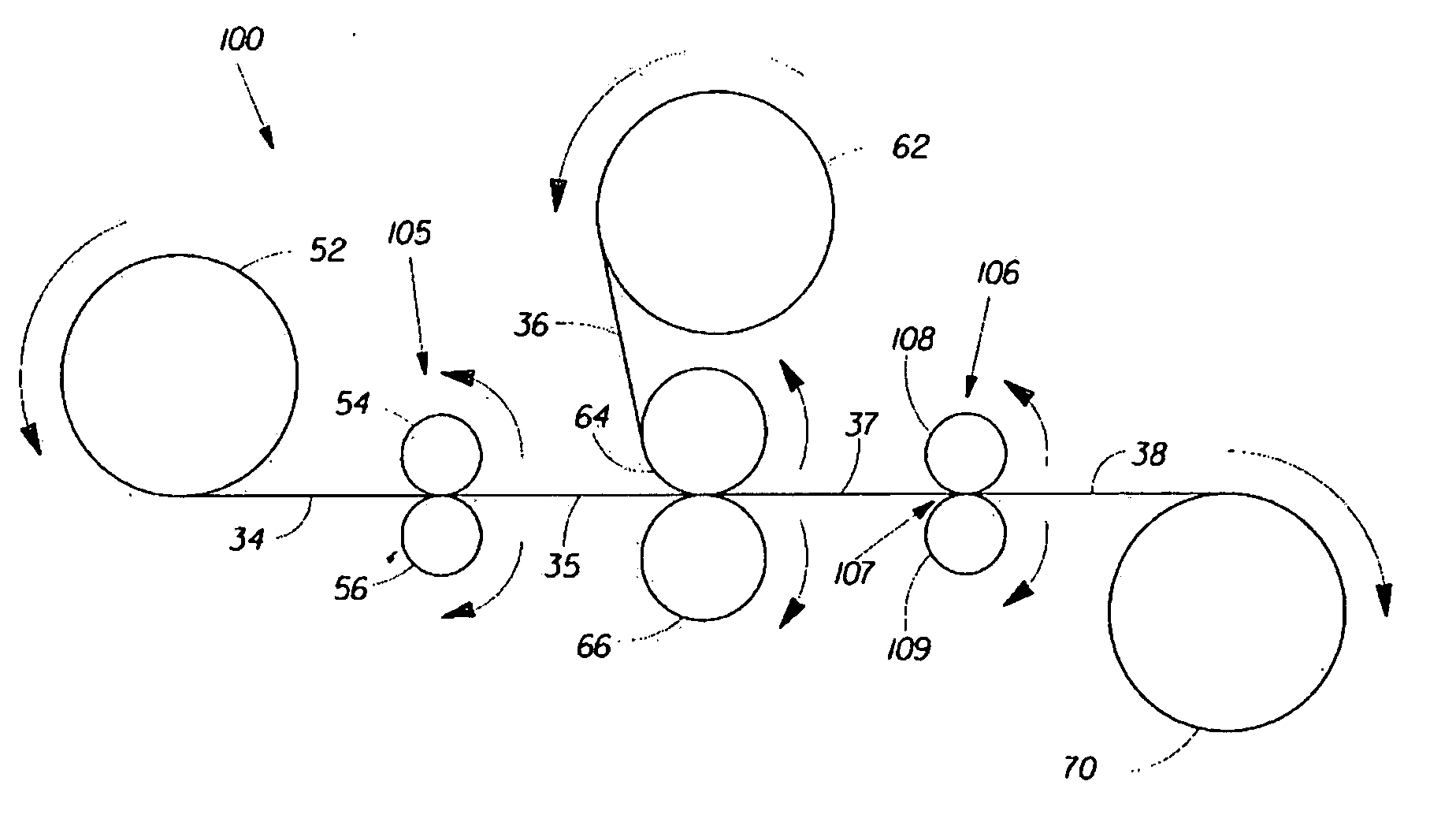Method of gravure printing elastomeric compositions
a technology of elastomeric composition and gravure printing, which is applied in the direction of superimposed coating process, liquid/solution decomposition chemical coating, paper/cardboard containers, etc., can solve the problem of failure of elastomer to bond to the substrate, unidirectional stretch, residual adhesive portion on the application,
- Summary
- Abstract
- Description
- Claims
- Application Information
AI Technical Summary
Benefits of technology
Problems solved by technology
Method used
Image
Examples
example 1
[0155] This example compares the properties of commercially available adhesives (elastomeric and nonelastomeric), a thermoplastic elastomer and exemplary non-adhesive elastomer compositions.
Peel ForceDescription(N / cm)TypeH273715.54AdhesiveH2031214.40AdhesiveVector 421132.31Non-adhesiveFirst non-adhesive elastomer40.23Non-adhesiveSecond non-adhesive elastomer50.16Non-adhesive1Elastomeric adhesive from Bostik Findley of Wauwatosa, WI2Adhesive from Bostik Findley3Styrene / isoprene / styrene block copolymer available from DexcoPolymers LP, Houston, TX4Vector 8508a20%Low Molecular Weight Thermoplastic Elastomerb50%Drakeol 600c25%M Photoinitiatord 5%aStyrenic block copolymer from Dexco Company, Houston, TXbExperimental Styrenic-isoprene-styrene block copolymer fromDexcocMineral oil from Pennzoil Co., Penrenco Div., Karns City, PAdExperimental sample from National Starch and ChemicalsBridgewater, NJ5Septon 4033a40%SHF 401b40%Dioctyldodecylterephthalate oligimer20%aStyrenic block copolymer f...
PUM
| Property | Measurement | Unit |
|---|---|---|
| temperature | aaaaa | aaaaa |
| wt % | aaaaa | aaaaa |
| wt % | aaaaa | aaaaa |
Abstract
Description
Claims
Application Information
 Login to View More
Login to View More - R&D
- Intellectual Property
- Life Sciences
- Materials
- Tech Scout
- Unparalleled Data Quality
- Higher Quality Content
- 60% Fewer Hallucinations
Browse by: Latest US Patents, China's latest patents, Technical Efficacy Thesaurus, Application Domain, Technology Topic, Popular Technical Reports.
© 2025 PatSnap. All rights reserved.Legal|Privacy policy|Modern Slavery Act Transparency Statement|Sitemap|About US| Contact US: help@patsnap.com



